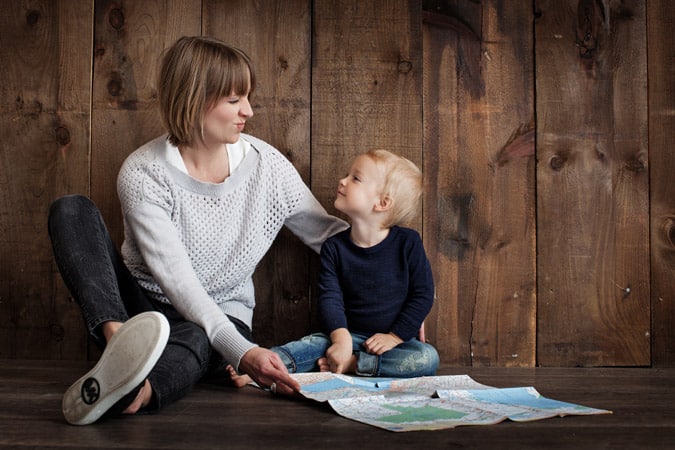Hi there,
What’s the Story?
This week I will do my citizenship test for America. While Ireland will always be my number one, I’m hoping to get two passports so I can feel more like Jason Bourne or James Bond.
In this week’s episode of the Changing Minds podcast, I dive into one of my favorite topics… the world of beliefs. Specifically, I explore how to believe in yourself better: video.owenfitzpatrick.com. Below is an article to give you a taste of what I cover.
__________________
Believing in Yourself: The Ultimate Guide to Transforming Your Identity
Estimated reading time: 6 minutes 33 seconds
What do you believe about yourself?
Whatever it is, it plays a huge part in determining how successful you are in life. Your beliefs shape so much of what you’re capable of achieving.
This week, we’re going to explore the concept of belief and how it forms your identity. We’ll unpack the incredible science behind it and provide you with actionable steps to transform the way you think and feel about yourself.
Understanding Beliefs
To start, let’s define some key terms.
Belief is an idea that you feel certain about.
Conviction is a strong belief, with high certainty.
Knowledge is a set of beliefs backed by justification and evidence.
Assumptions are implicit beliefs, often unnoticed.
Values are beliefs about what’s important.
Ideology is a set of beliefs about how the world works and should work.
Identity is a set of beliefs you have about yourself.
Understanding these definitions sets the stage for our deep dive into beliefs and how they shape your identity.
The Neuroscience of Belief
Since I love diving into the brain and exploring how it works, let’s talk about the neuroscience behind beliefs. Your brain has the incredible ability to learn and adapt through a process called neuroplasticity. This means your brain can make new connections and strengthen existing ones, which is crucial for forming and changing beliefs.
Key chemicals involved in this process include:
- Dopamine: Related to reward anticipation. When you believe something and it’s rewarded, you get a hit of dopamine, reinforcing that belief.
- Serotonin: Linked to feeling content and confident.
- Cortisol: Associated with stress. High levels can lead to self-doubt.
When such chemicals are released they impact neuroplasticity. The idea is that ideas become beliefs as connections are strengthened. So when you learn an idea and soon confirm that idea is true, your brain actively cements that connection.
That’s why it’s difficult often to distinguish knowledge from beliefs. A connection is a connection therefore we tend to act as if our beliefs are true which makes them feel true even if we haven’t as much evidence as we have for something that is accepted knowledge.
However, by understanding and leveraging these chemicals, you can influence your brain’s ability to form new beliefs and reinforce positive ones. The aim is to start loosening those connections but finding alternatives that require new ways of thinking. Neuroplasticity helps move this process forward.
Core Beliefs vs Emotional Beliefs
There are two main types of beliefs:
Core Beliefs: These are deeply held and feel undeniably true. For example, believing in gravity or that your family loves you.
Emotional Beliefs: These are based on feelings rather than facts. For instance, if someone says you’re unattractive and you feel bad, you might start to believe it, even if it’s not true.
Recognizing the difference between these types of beliefs is crucial. Emotional beliefs can often be misleading and are influenced by your current feelings.
In many ways, depending on what state we are in, we see the world differently.
There is a concept known as Affective Realism where we tend to cultivate a perception of the world based on how we are feeling.
So, just as our beliefs can influence our emotions, our emotions can put us in a frame of mind whereby certain beliefs are triggered or activated.
For instance, when you are dealing with depression, it can be easy to believe that there is no hope and no point in life but yet when we get out of that state, we believe differently.
These ‘emotional’ beliefs are malleable.
Why We Believe What We Believe
Your brain’s primary job is to keep you alive, not to make you happy or successful.
It makes predictions based on past experiences, current sensations, and external observations. This process helps form beliefs that guide your behavior.
From a young age, your brain recognizes patterns and forms beliefs based on those patterns.
For instance, if crying brings attention, you learn that crying is effective. These early beliefs shape your understanding of the world and yourself.
The problem is, as we discussed earlier, our feelings can impact the lessons we learn. When we feel bad our interpretations of an event will likely be bad and therefore we will form negative beliefs.
Furthermore, we don’t always pick up the right lessons.
If we get rejected, for example, we can learn from that there is no point in trying or we can learn to take feedback and adjust our approach.
Depending which lesson you learn will determine how useful your beliefs will be. The real question is what stories are we telling ourselves about what happened?
Stories and Beliefs
Our beliefs are deeply intertwined with the stories we tell ourselves. Stories help us make sense of the world, assign values, and establish cause-and-effect relationships. These narratives form and reinforce our beliefs.
For example, if you tell yourself that your friend is angry because they ignored your calls, you form a belief about their feelings towards you. This story-based belief shapes your perception and actions.
To change the beliefs we have, we need to change the stories we tell ourselves.
Changing Beliefs
To change your beliefs, while you start with the underlying stories, there is more work to do. Here’s a framework I use, called the SCALED model:
- Stories: Change the stories you tell yourself.
- Community: Surround yourself with people who reinforce positive beliefs.
- Actions: Take actions that align with the identity you want to build.
- Logical Reasoning: Challenge and re-evaluate the logic behind your beliefs.
- Emotional Reasoning: Understand how emotions influence your beliefs.
- Drives: Recognize the motivational reasons behind your beliefs.
By addressing each of these areas, you can start to transform your beliefs and, consequently, your identity.
The Art of Self-Belief
The beliefs we have about ourselves can be described as our identity. These beliefs are the product of the stories we tell ourselves and the stories we have been told by others about who we are. This includes what we’re good and bad at, what groups we’re part of, what we like and dislike, what makes us different, and what might be possible for us.
The big mistakes most people make with the beliefs they have about themselves are either:
a) They try to be just like somebody else or everybody else and therefore limit themselves that way.
b) They believe what they have been told about who they are including the stories people have shared with them about what is possible for them.
c) They focus too much on what they can do today and not enough on who they can become in the future.
The reality is that we need to change the stories we tell ourselves about ourselves from who we are today, what our abilities are, and who we can become in the future.
We need to think in terms of potential and work towards realizing that potential. That is where the key to antifragile self-belief lies.
When you are out of the evaluation mindset and into the improvement mindset, you’re in a much better position to succeed.
Practical Strategies to Transform Beliefs
Given that, what are some important strategies we can use to work on our beliefs?
1. Build Belief Flexibility: Cultivate a ‘belief growth mindset’. Recognize that it’s okay to be wrong and see it as an opportunity to learn and grow.
2. Redefine Your Identity: Trust in your worth and potential. Your identity is not just who you are now, but who you can become.
3. Conduct a Self-Belief Audit: Reflect on your current beliefs and envision what you could be. Identify the groups, actions, appearances, and behaviors that align with your ideal self.
4. Leverage the SCALED Model: Use the model to create a comprehensive plan for changing your beliefs and identity.
Believing in yourself is about deciding to bet on yourself and striving to become everything you’re capable of being. It’s about recognizing that your identity is a story you tell yourself, and you have the power to rewrite that story.
No matter what challenges you face, you have the capacity to change your life. It might be difficult, but by transforming your beliefs and telling yourself a new story, you can achieve incredible things.
____________________
The Brain Prompt
Start a self-belief audit.
What are all the things that you believe are true about you?
Which of these beliefs limit you?
Have you considered that you could be wrong?
What is also possibly true that could be more empowering?
I hope you found this newsletter helpful. Remember to believe in yourself, and share this with others who might benefit from it.
For more insights, subscribe to my weekly newsletter (owenfitzpatrick.com/newsletter)
Cheers,
Owen.
P.S. To watch this week’s Changing Minds podcast episode on ‘How to Believe in Yourself‘, check it out here.





